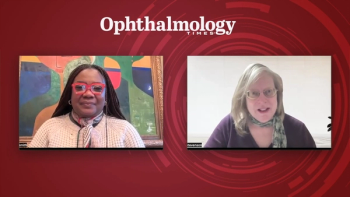
Intravitreal VEGF Trap looking promising
Interim results from a Phase I study suggest that intravitreal injection of VEGF Trap (Regeneron Pharmaceuticals) is a promising new approach for the treatment of exudative age-related macular degeneration, said Quan Dong Nguyen, MD, at the World Ophthalmology Congress.
Interim results from a Phase I study suggest that intravitreal injection of VEGF Trap (Regeneron Pharmaceuticals) is a promising new approach for the treatment of exudative age-related macular degeneration, said Quan Dong Nguyen, MD, at the World Ophthalmology Congress.
VEGF Trap is a fusion protein of key domains of VEGF receptors 1 and 2 as well as of placenta growth factor (PIGF) that is smaller than any known anti-VEGF antibodies, but has significantly higher binding affinity than those compounds. In addition, it has demonstrated efficacy in multiple preclinical cancer and ocular models.
The Phase I study of intravitreal administration enrolled 21 patients who received a single injection of VEGF Trap over the dose range of 0.05 to 4.0 mg. In follow-up available so far, there has been no systemic or ocular dose-limiting toxicity seen at the highest dose administered, while the treatment was associated with a rapid and substantial decrease in retinal thickness measured by optical coherence tomography that has persisted for at least 8 weeks.
"Additional studies will be performed to determine the optimal dose and dosing interval and another Phase I study will be randomizing patients to VEGF Trap or pegaptanib sodium (Macugen, OCI/Eyetech Pharmaceuticals). In addition, a Phase 2 trial is about to start that will examine three different doses of VEGF Trap administered at different frequencies," said Dr. Nguyen of the Wilmer Eye Institute/Johns Hopkins University in the United States.
Newsletter
Don’t miss out—get Ophthalmology Times updates on the latest clinical advancements and expert interviews, straight to your inbox.





